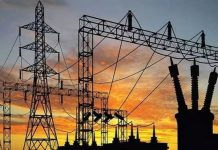ISLAMABAD: The use of indigenous resources for the generation of energy can help Pakistan to save foreign exchange reserves as the country has sufficient solar, wind and hydropower resources to fulfil its demand.
Ehteshamul Haq, an official of the Ministry of Energy and Power Division, told WealthPK that the government recently abolished the 30 percent tax imposed on the import of solar panels. The government has also decided to shift all public buildings to solar energy to save electricity.
According to a study conducted by the World Bank, Pakistan can meet its demand for electricity by utilising 0.071 percent of its total area for solar photovoltaics.
Pakistan is blessed with enormous hydropower potential. The country can generate up to 40,000 megawatts of electricity by effectively exploring the potential. The energy policy of Pakistan, commonly known as the Indicative Generation Capacity Expansion Plan (IGCEP) 2021-2030, has focused on utilising indigenous resources for power generation.
The plan envisages the addition of 13,148 megawatts of electricity to the national grid by 2030. The current hydropower generation capacity of the country is 9,873 megawatts. According to IGCEP, the hydropower generation capacity of the country will be increased to 14,353 megawatts by the year 2025 and to 23,036 megawatts by 2030, which will be 43 percent of the total electricity generated through different resources.
However, a deep appraisal of the plan shows that these projections are far from realistic. It would not be easy to achieve the targets set in the plan. The completion of various hydropower projects, particularly medium and mega schemes, in the country is already behind the schedule.
Currently, 18 small, large, and medium hydropower stations are operational in Pakistan. Many other small hydropower stations are also functioning in different provinces. These power stations are managed by Pakistan Water and Power Development Authority (WAPDA), provincial governments and Independent Power Producers (IPPs). They have been connected to the national grid.
The second and third extensions of Tarbela power station generate 3,478 megawatts of electricity while its fourth extension produces 1,410 megawatts of eelctricty. The capacity of Ghazi Barotha power station is 1,450 megawatts, Mangla 1,000 megawatts, Neelum Jhelum 969 megawatts, Warsak 243 megawatts, Chashma 184 megawatts, Patrind 150 megawatts, Duber Khwar 130 megawatts, Allai Khwar 121 megawatts, Golen Gol 108 megawatts, Gulpur 102 megawatts, Jinnah 96 megawatts, New Bong 84 megawatts, Malakand-III 81 megawatts, Khan Khwar 72 megawatts, Daral Khwar 37 megawatts, Jagran-I 31 megawatts and capacity of Jhing power station is14 megawatts.
Energy is the key sector of Pakistan’s economy. There is a direct correlation between energy security and national security. Currently, Pakistan relies mostly on imported fuel to generate electricity. Owing to an unprecedented hike in the oil prices in the international market, Pakistan’s import bill of oil increased by over 99.14 percent and reached $19.69 billion in 10 months of the previous fiscal, according to the data collected by WealthPK.
The import of petroleum products by Pakistan went up by 126.17 percent in value and 26.31 percent in quantity. The import of crude oil rose by 74.70 percent in value and two percent in quantity during the first 10 months of the previous fiscal while those of liquefied natural gas increased by 86.29 percent.
A steady increase in the oil import bill is triggering a trade deficit and poses a threat of exerting pressure on the national economy. The use of indigenous resources for the generation of energy can help Pakistan to strengthen its economy by reducing the oil import bill.
-INP





